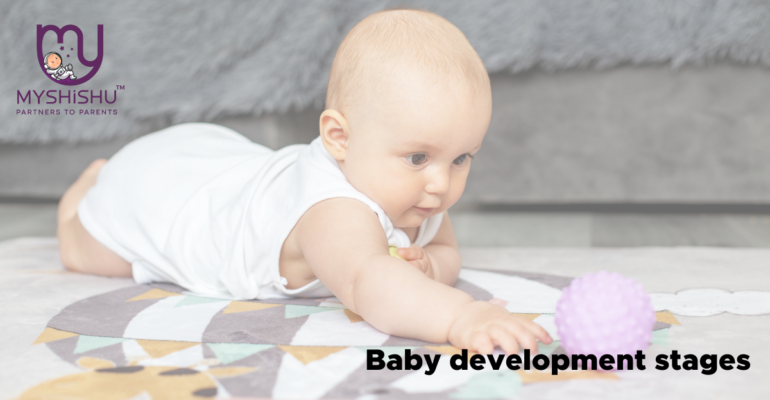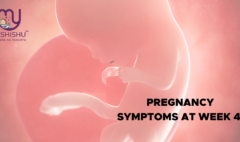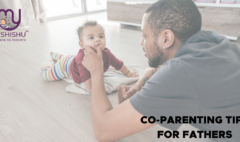The Amazing Journey: Your Baby’s Development Stages in the First Year
The Amazing Journey: Your Baby’s Development Stages in the First Year
Congratulations to you! You have welcomed a small miracle into your world. While you are going through a flurry of emotions and sleepless nights, you should also want to know how your baby is growing. This first year is a time of incredible growth, where your little one goes from a seemingly helpless hoarder to a curious and interactive creature.
Introduction
The first year of your baby’s life is an incredibly scary transition. Witnessing the transformation of their tiny, seemingly helpless newborn into a curious and expressive little person is a truly magical experience. This year is filled with developmental milestones in four key areas: physical fitness, fine motor skills, communication and language, and social and emotional development
This blog will guide you through this exciting journey, exploring the key milestones your child will face during the first year.
Table of Contents
We’ll break them down into manageable quarterly chunks, highlighting their progress in different areas:
- These require the use of gross motor skills such as swinging, sitting, and finally walking.
- These primarily involve fine motor skills in the hands and fingers, such as reaching, grasping and manipulating objects
- This includes how your child interacts with you and the world around them, including expressing emotions and attachment
- This focuses on your child’s growing ability to understand and use language, from murmurs and whispers to first words.
- This refers to your child’s problem-solving skills, curiosity, and understanding of the world.
First 3 months: A world of new emotions
This first season is all about adjusting to life outside the womb. Your baby’s senses are developing rapidly and will pick up on everything – sights, sounds, smells and textures.
Here’s what you can observe.
- Gross motor skills:
Your newborn will spend most of the time crawling, but will begin to lift his head and chest when placed on his stomach. They may also stumble easily and make jerky movements.
- Fine Motor Skills:
They have a strong ability to wrap objects and easily grip your fingers. However, their touch will most likely be asymmetrical.
- Social and emotional development:
Newborns cry to communicate their needs and find comfort in familiar voices and touches. They begin to show the first signs of socializing by laughing (usually at themselves at first) and buzzing sounds.
- Language and Communication:
Cooing and gurgling are your baby’s first attempts at communication. They will also pay close attention to your voice and may be quiet when talking to you or singing.
- Sensory Development:
Your baby’s primary focus is meeting his basic needs and exploring his immediate environment through his senses. They begin to track moving objects with their eyes and may show a preference for familiar faces.

4-6 months: Walking and knowledge acquisition
The second year is a period of great improvement. Your baby’s muscles are getting stronger, and you’ll notice a rapid improvement in his motor skills and communication skills. Here are some highlights:
- Gross motor skills: Your baby will have more control over head and neck movements. They start rolling from the inside of the stomach outwards and try to go back into the stomach. They will also push their arms up when placed in the abdominal position.
- Fine Motor Skills: Beginning to reach and grasp objects with both hands. You can also bring things in front of you for analysis.
- Social and emotional development: Social interactions have greater purpose. They will quickly smile at familiar faces and even laugh out loud. Separation anxiety also begins to surface at this time.
- Language and Communication: Cooing and gurgling become babbling, with multiple sounds. They will recognize familiar voices and start responding to their names.
- Cognitive development: Your child becomes more aware of his surroundings and begins to make permanent impressions, recognizing that things are still there even if he can’t see them.
7-9 months: Crawling, talking and curious
The second half of the year sees a rise in curiosity and exploration. Your child will be more mobile, eager to interact with their surroundings, and their communication skills will continue to improve.
- Gross Motor Skills:
Crawling is a priority at this point. They will also pull themselves up to stay supported and even take their first wobbly steps.
- Fine Motor Skills:
Their hand-eye coordination is much improved. They can pick up small objects and transfer them from one hand to another.
- Social and emotional development:
Social interaction is very communicative. Your child will love playing simple games like peek-a-boo. They may also express unconscious anxiety about other people.
- Language and communication:
Babbling is more complex, with sounds mimicking voices and rhythms. They start with single words like “uncle” and “grandpa.”
Mental development The permanence is fully established.
10-12 months
The last quarter is all about change and experimentation. Your child is very purposeful in his actions and eager to explore the world around him. Here are some of the key improvements:
- Motor skills:
Walking independently, albeit wobbly, is an important milestone for most babies. They start climbing stairs with help and enjoy running and exploring their surroundings.
- Fine-Motor Skills:
Their hand-eye coordination is sophisticated, allowing them to build towers, write with crayons and manipulate objects quickly
- Social and emotional development:
Your child is becoming more verbal, using key words and gestures
Additional Common Questions
Q: What if my child is not meeting their age milestones?
A: If you are concerned about your child’s growth, talk to your pediatrician. They can monitor your child’s progress and offer instructions or recommend further testing if needed.
Q: How can I help my child reach his developmental milestones?
A: There are so many things you can do to help your child grow! Talk and sing with them often, play games like peek-a-boo, give them safe toys and objects to explore, and respond to their cues and needs.
Q: What are the best ways to learn more about baby growth?
A: The Centers for Disease Control and Prevention (CDC) has a great website with information about infant growth milestones.
Conclusion
The first year of your baby’s life is a wildly exciting transition! From tiny newborns to curious travelers, they grow up incredibly fast. By understanding the specific milestones at each level, you can celebrate their progress and provide appropriate support for their continued growth. Remember, each baby grows at its own pace, so don’t be discouraged if you don’t hit a milestone in time. Always talk to your pediatrician if you have any concerns.











